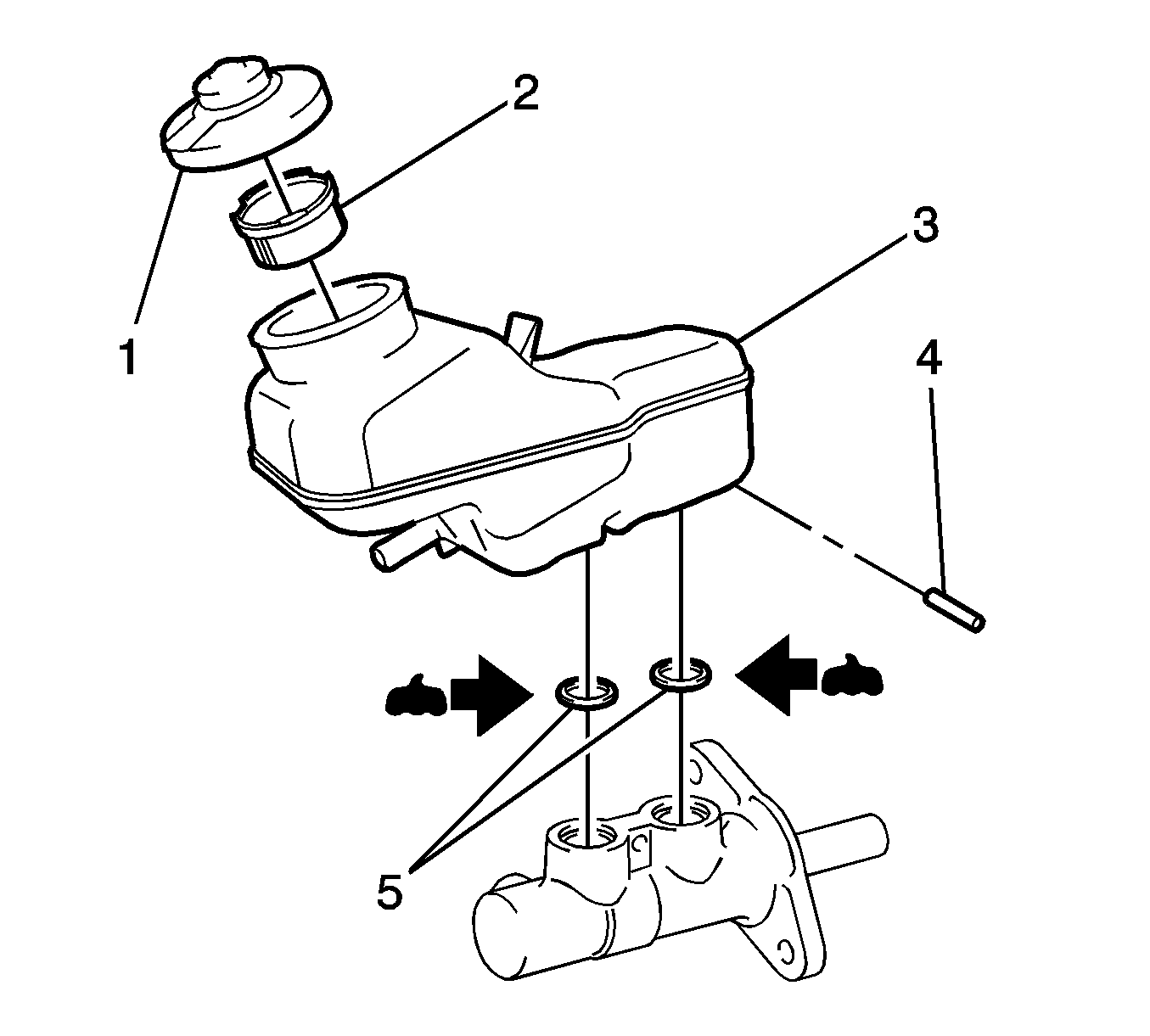Warning: Refer to Brake Fluid Warning in the Preface section.
Warning: Refer to Brake Fluid Irritant Warning in the Preface section.
Caution: Refer to Brake Fluid Effects on Paint and Electrical Components Caution in the Preface section.
Caution: Refer to Filling the Master Cylinder Caution in the Preface section.
- Inspect the brake fluid for the following conditions, indicating brake fluid contamination:
| • | Fluid separation, indicating two types of fluid are present. A substance other than the recommended brake fluid has been introduced into the brake hydraulic system. |
| - | Swirled appearance--Oil-based substance |
| - | Layered appearance--Silicone-based substance |
| • | Fluid discoloration, indicating the presence of moisture or particles that have been introduced into the brake hydraulic system. |
| - | Cloudy appearance--Moisture |
| - | Dark appearance/suspended particles in fluid--Dirt, rust, corrosion, brake dust |

- Inspect the master cylinder reservoir cap (1) and the reservoir-to-master cylinder grommets (5) for swelling, indicating brake fluid contamination.
- If the brake fluid WAS contaminated with an oil-based or a silicone-based substance, indicated by fluid separation and/or a swollen master cylinder reservoir cap and/or swollen reservoir-to-master cylinder grommets, perform the following:
| 3.1. | Remove ALL of the components containing internal rubber seals or linings which have been contaminated by the contaminated brake fluid. Refer to the following procedures: |
| 3.2. | Clean out all the hydraulic brake pipes using denatured alcohol, or equivalent. |
| 3.3. | Dry the brake pipes using non-lubricated, filtered air. |
| 3.5. | Dry the reservoir using non-lubricated, filtered air. Inspect the reservoir for cracks and/or damage and replace if necessary. |
| 3.6. | Replace the brake master cylinder reservoir cap. |
| 3.8. | Repair or replace ALL of the following components listed and install them to the vehicle. Refer to the following procedures: |
- If the brake fluid was NOT contaminated with an oil-based or a silicone-based substance, but WAS contaminated with water or dirt, rust, corrosion, and/or brake dust, replace the brake master cylinder reservoir cap diaphragm which may have allowed
the moisture or particles to enter the hydraulic system.
- Fill the brake master cylinder reservoir to the maximum-fill level with Delco Supreme 11® (GM P/N 12377967) or the equivalent DOT-3 brake fluid from a clean, sealed brake fluid container.
- Bleed the hydraulic brake system. Refer to
Hydraulic Brake System Bleeding.

